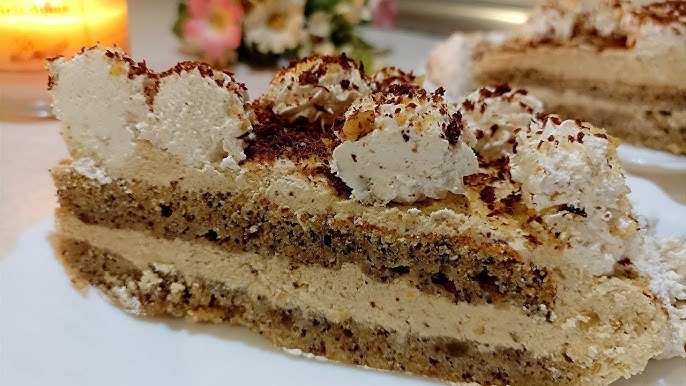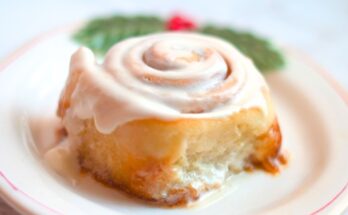Torta Recipe: When you hear the word “torta,” what comes to mind? If you’re thinking of a rich sandwich bursting with flavor, you’re absolutely right. A torta is a popular Mexican sandwich that blends together the essence of home-cooked comfort food with a street food vibe. It’s made using a crusty roll, often called a bolillo or telera, and is typically loaded with meats, cheeses, veggies, and bold sauces. What makes it unique is not just its ingredients, but how it brings together multiple textures—crispy, juicy, creamy, and chewy—in one delicious bite.
Unlike a sub or hoagie, tortas often come with refried beans, avocado, pickled jalapeños, and even scrambled eggs. The possibilities are endless, making it a staple in Mexican cuisine. Whether served hot or cold, tortas offer a satisfying meal any time of day, from a hearty breakfast to a filling dinner. You can find them sold at roadside stands, in mom-and-pop diners, or crafted at home with love and flair.
Why You’ll Love This Torta Recipe
If you’ve never made a torta before, get ready for a flavor-packed journey that’s both fun and easy to follow. This torta recipe is designed to be simple, accessible, and, most importantly, customizable to your taste. Don’t like spicy food? Leave out the jalapeños. Want a more filling sandwich? Add an extra layer of grilled meat or cheese.
This step-by-step guide is tailored for home cooks of all levels. No special tools, no fancy techniques—just real ingredients and real flavor. Once you try this, you’ll probably never look at a regular sandwich the same way again. It’s not just food; it’s an experience—bold, authentic, and 100% satisfying.
Essential Ingredients for Torta
Bread Selection
Let’s start with the foundation of any torta—the bread. You can’t just grab any loaf off the shelf and expect it to hold all those glorious fillings. The traditional choices are bolillo and telera rolls, known for their soft interior and slightly crusty exterior. Bolillo is shaped like a mini French baguette, while telera is flatter and rounder, ideal for pressing and grilling.
What makes these breads so perfect? They strike a balance: firm enough to hold juicy meats and sauces without turning into a soggy mess, yet soft enough to bite into easily. If you can’t find them, a good-quality ciabatta or sourdough roll can serve as a substitute, but avoid overly airy or soft rolls—they’ll collapse under the pressure.
For a crisp outer layer, it’s a good idea to toast or grill the bread lightly with a dab of butter or oil before assembling. This adds both texture and flavor, and it makes the torta easier to hold.
Classic Fillings and Toppings
Now, let’s talk fillings—the heart of any torta. The classic options include:
- Carnitas (slow-cooked pork)
- Milanesa (breaded and fried beef or chicken)
- Chorizo (Mexican sausage)
- Ham or turkey slices
- Scrambled or fried eggs (for breakfast tortas)
But a torta isn’t just about meat. What sets it apart are the complementary toppings. You’ll typically find layers of:
- Refried beans (as a spread, either black or pinto)
- Avocado or guacamole
- Pickled jalapeños
- Shredded lettuce
- Tomato slices
- Sliced onion
- Cheese (queso fresco, panela, or even mozzarella)
The combination of flavors and textures makes each bite exciting. Want to make it spicy? Add chipotle peppers in adobo sauce. Prefer it creamy? A generous smear of mayonnaise or crema will do the trick.
Sauces That Make a Difference
One thing that elevates a torta from good to unforgettable is the sauce. This can range from something as simple as mayo to a smoky chipotle spread or spicy salsa verde.
Here are a few sauce ideas that work wonders:
- Chipotle mayo: A mix of mayonnaise, lime juice, and chipotle peppers.
- Avocado salsa: Blended avocado with lime, garlic, and cilantro.
- Salsa roja: A red chili-tomato salsa for that authentic Mexican heat.
Don’t skimp here—slather the sauces on both sides of the bread so every bite is rich and flavorful. It’s the glue that binds all the ingredients together and gives the torta its signature zest.
Tools You’ll Need
Basic Kitchen Equipment
You don’t need a restaurant kitchen to make a killer torta. Here’s what you’ll need:
- Skillet or grill pan – For toasting the bread and cooking your meat or eggs.
- Spatula or sandwich press – To press the sandwich together while toasting.
- Knife and cutting board – For prepping veggies and slicing bread.
- Small bowls or ramekins – To keep your sauces and toppings organized.
- Toaster (optional) – If you prefer to toast your bread separately.
Having these tools ready makes the process smoother and more enjoyable. You’ll be able to flow from one step to the next without scrambling for utensils.
Optional Add-ons for Extra Flavor
Want to go above and beyond? Consider these extras:
- Panini press – Great for getting that perfect grilled exterior.
- Food processor – For whipping up homemade salsas or spreads.
- Tortilla warmer – Not essential, but handy if you’re serving sides like chips or tortillas.
While not required, these tools can help you fine-tune your torta game. Whether you’re hosting a brunch or meal-prepping for the week, they’ll elevate your sandwich from simple to standout.
Step-by-Step Torta Recipe Guide
Step 1 – Preparing the Ingredients
Before anything hits the skillet, it’s all about the prep. Start by gathering your ingredients and setting them up in an assembly line. This includes slicing the tomatoes, onions, avocados, and cheese. If you’re using meat, make sure it’s cooked, seasoned, and warm. For example, if you’re using carnitas, shred them and warm them up in a pan with a splash of oil.
Then, toast your bread halves lightly in a pan with a little butter. This keeps the inside soft and the outside perfectly crunchy. While the bread is toasting, heat your refried beans in a separate pan so they’re warm and spreadable.
Pro tip: If using eggs, make them last so they’re fresh and hot when you layer them in.
Step 2 – Toasting the Bread
Toasting the bread is where the magic really begins. This simple step transforms your torta from a sandwich to a gourmet experience. Lightly toasting the inside of the bread not only brings out its flavor but also creates a protective barrier against soggy fillings. Heat a skillet or pan over medium heat and spread a little butter or drizzle a bit of olive oil on each side of the bread. Press it down gently on the hot pan until it turns golden brown and slightly crispy.
Don’t rush this process. Let the bread get that slight crunch that contrasts beautifully with the soft, juicy fillings. If you’ve got a sandwich press or panini maker, this is the time to use it. Otherwise, a flat spatula and a little pressure will do just fine. The goal is to make sure the bread stays strong enough to hold everything together without falling apart after the first bite.
The scent of toasting bread with melted butter is irresistible. It’s that first sign you’re on your way to something seriously delicious.
Step 3 – Layering the Fillings
Now it’s time for the fun part—assembling your masterpiece. Think of this step as building flavor with every layer. Start with the bottom half of your toasted bread. Spread a generous amount of refried beans across the surface. This acts as a base and adds creaminess.
Next comes your protein. Whether it’s sliced ham, grilled chicken, or crispy milanesa, pile it high and even. Then, add your cheese. If you’re using a melty cheese like mozzarella or Monterey Jack, you can even heat it slightly so it gets gooey and stringy.
Follow with the fresh layers—sliced tomatoes, shredded lettuce, thinly sliced onions, and creamy avocado. Each one brings a different texture and taste. Then, don’t forget the pickled jalapeños. They add a tangy kick that cuts through the richness of the other ingredients.
Finally, on the top half of the bread, spread your sauce. Chipotle mayo, salsa verde, or plain mayo with a squeeze of lime are all great options. Press both halves together carefully and admire your fully loaded torta.
Step 4 – Pressing and Heating
Once your torta is stacked and ready, it’s time to bring everything together with a little heat and pressure. Return the sandwich to the skillet or sandwich press. Press it gently with a spatula or place another heavy skillet on top to flatten it slightly. This step helps meld all the ingredients and melt the cheese perfectly.
Let the torta heat for 3-4 minutes on each side over medium heat. You’re not just warming it—you’re creating a crispy, golden-brown exterior that holds everything inside like a savory treasure chest. The outer crust should be firm and toasty, while the inside stays warm, juicy, and overflowing with flavor.
Once it’s ready, carefully remove it from the heat. Let it sit for a minute to cool slightly—this helps the layers set and makes slicing easier.
Step 5 – Serving and Garnishing
You’ve made it to the final and most rewarding step—serving your torta. Grab a sharp knife and slice the sandwich in half or diagonally for that classic café-style presentation. Place it on a plate and garnish with a few extra pickled jalapeños, lime wedges, or a side of crispy tortilla chips.
Want to take it even further? Serve it with a side of Mexican street corn (elote), fresh fruit, or a simple salad. Add a glass of chilled horchata or tamarind juice to wash it all down. Every detail enhances the experience.
Eating a torta isn’t just a meal—it’s a celebration of flavors, textures, and culture. Whether you enjoy it solo or serve it at a family gathering, this sandwich brings comfort, joy, and a little bit of spice to your table.
Customizing Your Torta
Regional Torta Variations
Mexico is a country rich in regional flavors, and tortas are no exception. Across different states, the torta transforms to reflect local tastes and culinary traditions. Let’s take a little flavor tour:
- Torta Ahogada (Jalisco): Known as the “drowned sandwich,” this torta is soaked in a spicy tomato-chili sauce. It’s typically filled with crispy carnitas and served piping hot. Not for the faint of heart, but oh-so-rewarding.
- Torta de la Barda (Tampico): A beast of a sandwich layered with ham, sausage, pork rinds, beans, cheese, and more. This is the everything-but-the-kitchen-sink version and perfect for big appetites.
- Guajolota (Mexico City): Yes, this is a torta filled with tamales. It’s dense, carb-heavy, and the ultimate breakfast on the go. Street vendors sell these by the dozen each morning.
- Torta Cubana: Despite the name, this isn’t Cuban—it’s Mexican and jam-packed with various meats like milanesa, ham, sausage, hot dogs, and cheese. If indulgence had a name, it’d be this.
Each of these regional tortas tells a story. Trying out different versions not only diversifies your palette but also deepens your appreciation for Mexican street food culture.
Vegetarian and Vegan Alternatives
Don’t eat meat? No problem—tortas are endlessly adaptable. You can easily craft a vegetarian or vegan version without compromising on taste or texture.
Vegetarian Fillings:
- Grilled portobello mushrooms
- Roasted poblano peppers
- Refried black beans
- Cheese (queso fresco, panela, or mozzarella)
- Fried or scrambled eggs (for ovo-lacto vegetarians)
Vegan Alternatives:
- Vegan cheese or avocado slices
- Spicy tofu or tempeh
- Plant-based meat alternatives like seitan or soy chorizo
- Vegan mayo or cashew cream sauces
Load up your torta with veggies like lettuce, tomatoes, onions, and cucumbers. Add bold sauces—think chipotle vegan mayo or avocado-lime dressing—for that flavor punch. It’s all about layering tastes and textures in a way that makes your taste buds dance.
Tips for the Best Homemade Torta
Flavor Enhancing Tricks
If you want your torta to taste like it came straight from a Mexican street vendor, a few pro tips can make all the difference:
- Warm every component. Cold fillings can ruin the magic. Make sure your beans, meats, and even sauces are warm before layering.
- Use fresh produce. Fresh tomatoes, crisp lettuce, and ripe avocados aren’t just extras—they’re essential for balance.
- Don’t skimp on seasoning. Lightly season each layer, especially meats and veggies, with salt, pepper, and even a dash of lime juice.
- Add crunch. Chips inside the sandwich? It sounds wild, but a handful of tortilla chips or fried onions can add a textural surprise that’s ridiculously good.
- Balance the heat. A good torta should have just the right kick. If you go heavy on spice, add a cooling element like sour cream or crema.
Mistakes to Avoid
Even though tortas are simple in concept, it’s easy to make small missteps that impact the final result. Here’s what to watch out for:
- Overstuffing the bread: More isn’t always better. Overloading your torta makes it hard to eat and prone to falling apart.
- Using soft, cheap bread: Your sandwich is only as good as its foundation. Invest in good-quality rolls.
- Not toasting the bread: Skipping this step makes the sandwich soggy fast. A toasted crust is a must.
- Using cold or raw meat: The fillings should be warm, juicy, and well-seasoned.
- Forgetting balance: Every torta should have a balance of creamy, crunchy, spicy, and savory elements.
Keep these in mind, and your homemade torta will not just taste great—it’ll be memorable.
Nutritional Info and Storage Tips
Calorie Breakdown
Let’s be real—tortas aren’t exactly diet food, but that doesn’t mean you can’t enjoy them mindfully. The calorie count can vary depending on the fillings and sauces you use. Here’s a rough estimate for a standard torta with pork, beans, cheese, and veggies:
| Ingredient | Estimated Calories |
|---|---|
| Bolillo Bread | 180-220 kcal |
| Refried Beans | 100-150 kcal |
| Carnitas (4 oz) | 300-350 kcal |
| Avocado (¼) | 60 kcal |
| Cheese (1 oz) | 100-120 kcal |
| Mayo/Sauce | 90-150 kcal |
| Vegetables | 30-50 kcal |
| Total | 860-1100 kcal |
Vegan or veggie versions can shave off some calories, especially when you use leaner proteins or skip the creamy sauces.
How to Store Leftovers
Got leftovers? Here’s how to keep your torta fresh for later:
- Wrap tightly in foil or parchment paper and store in an airtight container.
- Refrigerate for up to 2 days. Any longer and the bread may get soggy.
- To reheat, use an oven or toaster oven at 350°F (175°C) for 10-15 minutes. Avoid microwaving unless absolutely necessary—it ruins the texture.
If you’re meal-prepping, store components separately and assemble just before eating. That way, you get a fresh and flavorful torta every time.
FAQs about Torta Recipe
1. What’s the best meat for a torta?
Carnitas and milanesa are top choices, but grilled chicken, chorizo, and ham work great too. Choose based on your flavor preferences.
2. Can I make tortas ahead of time?
Yes, but for best results, assemble just before eating to avoid soggy bread. Store ingredients separately if preparing in advance.
3. What bread should I use if I can’t find bolillo?
Ciabatta, sourdough rolls, or any firm sandwich roll with a slightly crusty crust and soft interior are good substitutes.
4. How do I make a healthy version of a torta?
Use whole grain bread, grilled proteins, lots of veggies, and go easy on cheese and sauces to reduce calories.
5. Can I freeze tortas?
It’s not ideal. Freezing changes the texture of the bread and fresh toppings. However, you can freeze cooked meats and reassemble fresh later.
Conclusion
A torta is more than just a sandwich—it’s a cultural icon, a comfort food, and a flavor bomb all rolled into one. From crispy bread to juicy meats and bold toppings, each bite tells a story. With this guide, you can master the art of making tortas right at home, whether you’re recreating a classic or putting your own twist on it.
The best part? It’s a meal you can personalize endlessly. Keep it traditional, go gourmet, or keep it light and vegan—the torta world is yours to explore. Grab your bread, layer up, press down, and dig in. Buen provecho!



